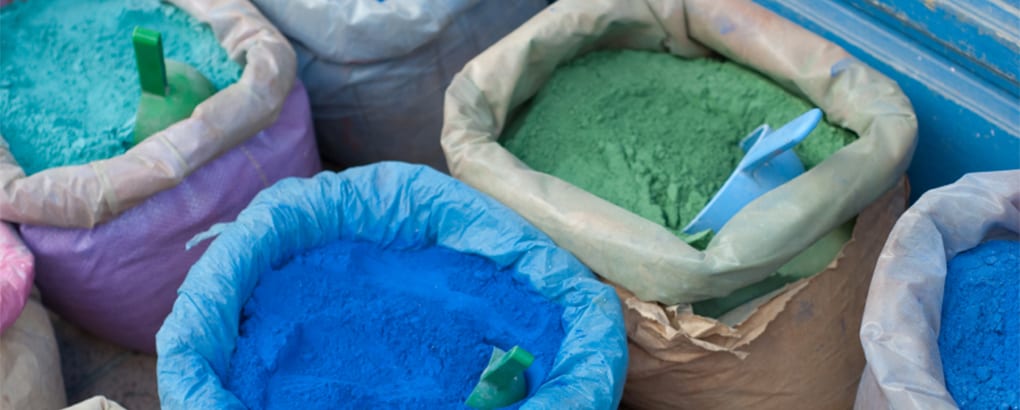Ecology

This is how it all began over 30 years ago:
Manufacturers wanted to produce environmentally friendly and healthy clothing.
Ecology as it relates to textile production is IVN’s core competence since its inception. The conventional production of clothing and such impacts the environment in many and various ways, many of them negative. Soil and aquifers are polluted, climate change is exacerbated, diversity of species neglected, resources wasted, toxins end up in our clothing and much much more. Although our focus today is less on garments and more on other textile and leather products, environmental protection and consumer safety remain two of the main focal points of our association and our members. We have only this one planet earth which only we can preserve. On a similar level, we as consumers are increasingly respectful of our own health.

Chemicals in every step of production
The key factor in textile ecology is the use of chemical substances and their effect on man and environment. Beginning with fibre cultivation but extending to the production of yarns and fabrics, the tanning of leather, and including dying, printing, finishing and surfacing…in every step the choice to be made is between hazardous and harmless chemicals. Thanks to current technological achievements, almost everything is possible without the use of a chemical club.
There is a logical connection between the use of chemicals in production and the health threatening substances found in textile and leather products. Many toxins can be removed during the production processes but, unfortunately, not all. Detergents or sweat can leach these toxins out of fibres or leather. They can then enter the body through the skin. Or they can leak into the environment through washing and do their damage there.

The manufacture of textiles and leather goods:
A complicated and complex process
Not only the chemicals, also the processes used in the textile and leather industry are associated with many other environmental dangers. This is due to the fact that a textile or leather article is generally very complex. Many different components are used for the finished garment or shoe, or are used in the processing. From the raw fibre or raw animal skin to buttons, yarns, clasps and closures, and including glues, detergents and other chemicals: the manufacture of each and every single component raises its own specific questions concerning humans and the environment. The textile production chain includes a multitude of individual work steps. Leather too is complicated to manufacture. Some production stages, for example the creation of fibre, tanning, dying and finishing involve a stronger environmental footprint than others. And depending upon how a pair of jeans is dyed or treated determines what hazardous effects it may have for the wearer’s health.

Organic natural fibres – our specialty
Everything begins with the raw material. The use of chemical pesticides and fertilizers, the use of irrigation or animal rights are the most potentially problematic issues involved in harvesting natural fibres such as cotton, linen, wool, silk and similar. By contrast, the crux in generating synthetic fibres tends to be energy input, particularly the use of non-renewable energy, and production chemicals. There is no easy answer to the question which fibre is ecologically preferable or less hazardous to health. In deciding whether that new sweater should be made of wool, cotton or rayon, it may help to know that certified organic natural fibres are produced according to strict legal standards that guarantee that neither the environment nor the wear’s health is negatively impacted.

The production process – the decisive parameters for sustainable products
A deliberate choice for organic fibre or sustainably produced raw skin for leather goods is only the beginning. The truly resource-intensive processes involved in the manufacture of a scarf or a leather handbag have yet to begin. Converting raw material, no matter whether it is leather, natural or synthetic fibre, to a usable product involves the input of many chemicals, water and energy. And many of these substances and components enter into surface water or into the air or even into the garbage. It is therefore of paramount importance to work sustainably. Conventional production often results in massive pollution of the environment and a significant risk to the wearer’s health.
For textiles, the truly critical processes are the many treatments of the fibre, in other words dying, printing, finishing while, for leather, it is finishing. But textile products can be treated at many stages in their production chain. Yarns, fabric and even finished textiles are bleached, dyed, smoothed, finishings applied (wrinkle-proof, water-repellent, easy-iron for example). Leather is waxed, oiled or coated to make it smoother, more uniform and to improve light fastness. All of these production steps make intensive use of water, energy and chemicals. It is in these processes that the use of environmentally friendly and healthy substances as well as optimized production processes that use as few resources as necessary makes all the difference.

What is left at the end of a product’s life
The final question is what to do with a shirt or shoes when they are no longer usable. How easy is it to recycle products or how readily do they decompose? Creating products in such a way that they can be returned to a life cycle is one of the challenges that we will increasingly have to face in the future. Our goal is to ecologically optimize the production chain for textiles and leather goods and thereby transform our industry as quickly and sustainably as possible into an environmentally friendly industry.
